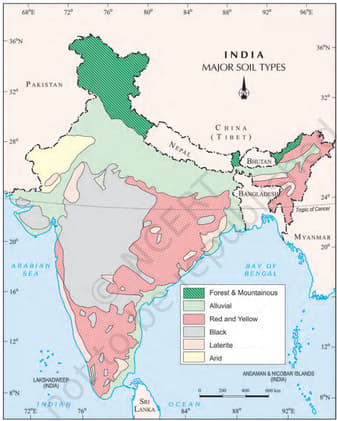Historically, colonising countries took advantage of India's rich resources to gain supremacy. Why was India not able to resist exploitation of her resources?

Important Questions on Resources and Development
Aaron gave his friends three clues about a type of soil.
(a) It is found in Maharashtra, the largest producer of cotton in India.
(b) During summer, the soil exhibits self-aeration capacity.
(c) It is rich in nutrients.
Which soil is being referred to by Aaron?
"It's surely our responsibility to do everything within our power to create a planet that provides a home not just for us, but for all life on Earth." -- Sir David Attenborough.
(a) What is meant by the above quote? Explain in two points.
(b) How does this quote align with sustainable development?
Answer the following questions:
(a) Give two examples of resource conservation practices in our daily lives that make the way for sustainable development.
(b) We need sustainable development because resource exploitation is leading to inequality. Explain the inequity of resource in two points.
(c) Name one international summit that discussed sustainable development as a goal.
Look at the map given below:

Observe the regions where laterite soil is present. Using the map, explain the similarities between areas that have laterite soil.
Match the following :
| RESOURCES | EXAMPLES |
| a. Renewable Resources | I. Forests and wildlife |
| b. Non -Renewable Resources | II. The oceanic resources |
| c. National Resources | III. Roads, canals and railway |
| d. International Resources | IV. Minerals and fossil fuels |
